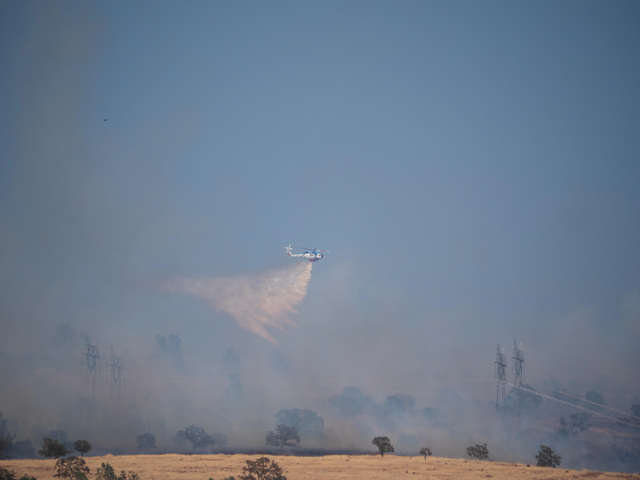California's Park Fire has become the largest wildfire in the United States this year, rapidly expanding and devastating communities as it scorches over 350,000 acres. Thousands of firefighters are battling the blaze, which remains completely uncontained, according to the California Department of Forestry and Fire Protection (Cal Fire). The fire, located about 90 miles north of Sacramento, has already destroyed 134 structures and forced widespread evacuations across multiple counties.
The intense fire activity and rapid spread have drawn comparisons to the 2018 Camp Fire, which devastated the nearby town of Paradise, making this the deadliest fire in the region since then. The Magen David Adom ambulance service has reported that the victims of the latest blaze, which struck a soccer field in Majdal Shams, range in age from 10 to 20, with many believed to be children.
"There's a tremendous amount of fuel out there and it's going to continue with this rapid pace," said Cal Fire incident commander Billy See. The fire has been advancing at an alarming rate of up to 8 square miles per hour, spreading north and east from its origin point in Chico, where it was allegedly started by a man pushing a burning car into a gully.
The suspect, 42-year-old Ronnie Dean Stout of Chico, was arrested early Thursday and is being held without bail pending a Monday arraignment. His actions have stunned local residents, many of whom still have fresh memories of the 2018 Paradise fire. "That anyone could deliberately put our community through that again is incredibly cruel. I don't understand it," said Amanda Brown, a resident of the area.
The #ParkFire has grown to a mind-boggling 348,370 acres in less than 72 hours, becoming one of the fastest-growing wildfires in California history.
The fire has been spreading at an average pace of over 60 football fields per minute since it began. pic.twitter.com/1gXqMWfv8a — Colin McCarthy (@US_Stormwatch) July 27, 2024
Evacuation orders and warnings have been issued for multiple communities in Butte, Plumas, Tehama, and Shasta counties. The situation remains dire, with the fire threatening thousands more structures and prompting additional evacuations. Residents in Forest Ranch, including Carli Parker, have been forced to flee their homes. Parker, who has been displaced by fires twice before, expressed little hope that her home would survive. "I think I felt like I was in danger because the police had come to our house... and they were running to their vehicle after telling us that we need to self-evacuate and they wouldn't come back," she said.
The fire's rapid spread and intensity have overwhelmed local firefighting resources, necessitating assistance from other regions. Some fire crews, previously battling other blazes in the Plumas National Forest, have been redirected to help contain the Park Fire. "As evidenced by the Park Fire to the west, some of these fires are just absolutely exploding and burning at rates of spread that it is just hard to even imagine," said Tim Hike, Forest Service incident commander of the Gold Complex fire near the California-Nevada line.
The broader wildfire situation across the western United States is equally alarming. In Oregon, the Durkee Fire has merged with the Cow Fire, burning nearly 630 square miles and remaining largely uncontained. Tragically, a pilot fighting the Falls Fire in southeastern Oregon died when his single-engine air tanker crashed. In Idaho, lightning strikes have ignited fast-moving wildfires, forcing the evacuation of multiple communities.
The National Interagency Fire Center reported that more than 110 active fires are currently burning across 2,800 square miles in the U.S. The fires have been fueled by record heat and dry conditions, exacerbated by climate change, which has increased the frequency of lightning strikes. In Canada, more than 8,000 square miles have burned in over 3,700 fires so far this year.
The human impact of these fires is profound. Sherry Alpers, a Forest Ranch evacuee, fled with her 12 small dogs and chose to stay in her car outside a Red Cross shelter after learning that animals were not allowed inside. "I'm kind of worried, but not that much," she said. "If it's gone, it's gone." Brian Bowles, another evacuee, is also staying in his car with his dog, uncertain if his mobile home is still standing.






